
Draught beer, also spelt draft, is beer served from a cask or keg rather than from a bottle or can. Draught beer served from a pressurised keg is also known as keg beer.
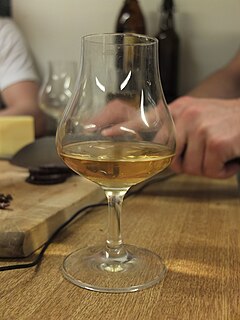
Scotch whisky is malt whisky or grain whisky, made in Scotland.
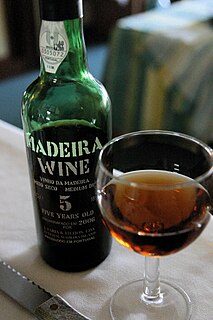
Madeira is a fortified wine made on the Portuguese Madeira Islands, off the coast of Africa. Madeira is produced in a variety of styles ranging from dry wines which can be consumed on their own, as an apéritif, to sweet wines usually consumed with dessert. Cheaper cooking versions are often flavoured with salt and pepper for use in cooking, but these are not fit for consumption as a beverage.

A double entendre is a figure of speech or a particular way of wording that is devised to have a double meaning, of which one is typically obvious, whereas the other often conveys a message that would be too socially awkward, sexually suggestive, or offensive to state directly.
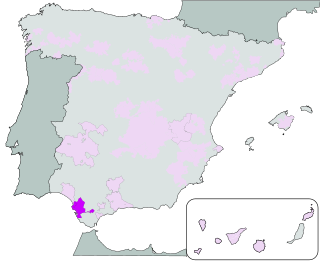
Sherry is a fortified wine made from white grapes that are grown near the city of Jerez de la Frontera in Andalusia, Spain. Sherry is produced in a variety of styles made primarily from the Palomino grape, ranging from light versions similar to white table wines, such as Manzanilla and fino, to darker and heavier versions that have been allowed to oxidise as they age in barrel, such as Amontillado and oloroso. Sweet dessert wines are also made from Pedro Ximénez or Moscatel grapes, and are sometimes blended with Palomino-based sherries.

A bottle is a narrow-necked container made of an impermeable material in various shapes and sizes that stores and transports liquids. Its mouth, at the bottling line, can be sealed with an internal stopper, an external bottle cap, a closure, or induction sealing.
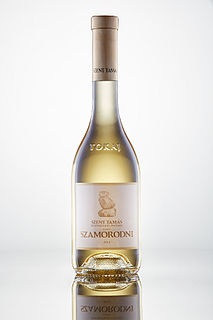
Tokaji or Tokay is the name of the wines from the Tokaj wine region in Hungary or the adjoining Tokaj wine region in Slovakia. This region is noted for its sweet wines made from grapes affected by noble rot, a style of wine which has a long history in this region. The "nectar" coming from the grapes of Tokaj is also mentioned in the national anthem of Hungary.

Single malt whisky is malt whisky from a single distillery.

Boxed wine is a non traditional glass bottled, but packaged wine in a cardboard or fiberboard rectangular box. The exterior is corrugated fiberboard box, but the wine is placed inside a plastic bladder which flows out from a push plastic release valve.
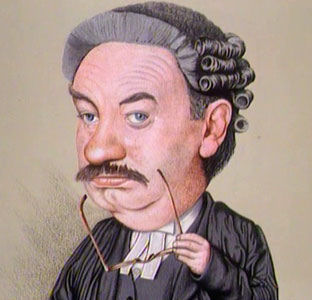
Rumpole of the Bailey is a British television series created and written by the British writer and barrister John Mortimer. It starred Leo McKern as Horace Rumpole, an elderly London barrister who defended a broad variety of clients, often underdogs. The TV series led to the stories being presented in other media including books and radio.

A winemaker or vintner is a person engaged in winemaking. They are generally employed by wineries or wine companies, where their work includes:

Vin jaune is a special and characteristic type of white wine made in the Jura region in eastern France. It is similar to dry fino Sherry and gets its character from being matured in a barrel under a film of yeast, known as the voile, on the wine's surface. Vin jaune shares many similarities with Sherry, including some aromas, but unlike Sherry, it is not a fortified wine. The wine is made from the Savagnin grape, with some of the most premium examples coming from the marl based vineyards in the Château-Chalon AOC. In other French wine regions, there has been experimentation in producing similar style wines from Chardonnay and other local grape varieties using cultured yeast such as the vin de voile wine produced in the Gaillac.

An eau de vie is a clear, colourless fruit brandy that is produced by means of fermentation and double distillation. The fruit flavor is typically very light.

Wine labels are important sources of information for consumers since they tell the type and origin of the wine. The label is often the only resource a buyer has for evaluating the wine before purchasing it. Certain information is ordinarily included in the wine label, such as the country of origin, quality, type of wine, alcoholic degree, producer, bottler, or importer. In addition to these national labeling requirements producers may include their web site address and a QR Code with vintage specific information.
Château Cheval Blanc, is a wine producer in Saint-Émilion in the Bordeaux wine region of France. As of 2012, its wine is one of only four to receive the highest rank of Premier Grand Cru Classé (A) status in the Classification of Saint-Émilion wine, along with Château Angélus, Château Ausone, and Château Pavie.
Reserve wine is wine of a higher quality than usual, or a wine that has been aged before being sold, or both. Traditionally, winemakers would reserve some of their best wine rather than sell it immediately, coining the term.
The glossary of wine terms lists the definitions of many general terms used within the wine industry. For terms specific to viticulture, winemaking, grape varieties, and wine tasting, see the topic specific list in the "See also" section below.
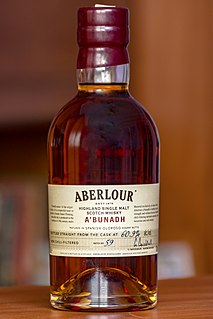
Cask strength is a term used by whiskey producers to describe a whiskey that has not been substantially diluted after its storage in a cask for maturation. The level of alcohol-by-volume (ABV) strength for a cask strength whiskey is typically in the range of 52–66% ABV.
This glossary of winemaking terms lists some of terms and definitions involved in making wine, fruit wine, and mead.














